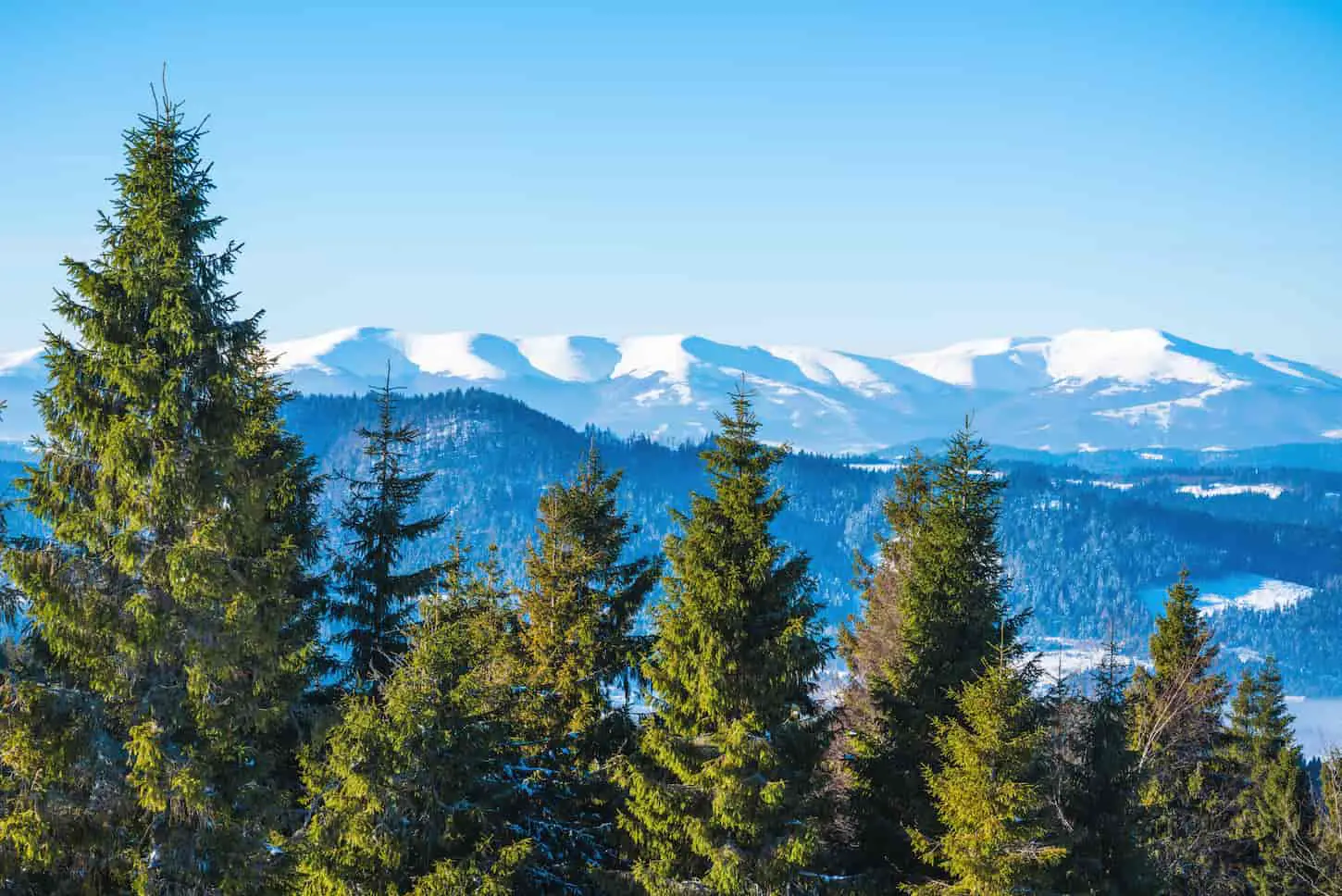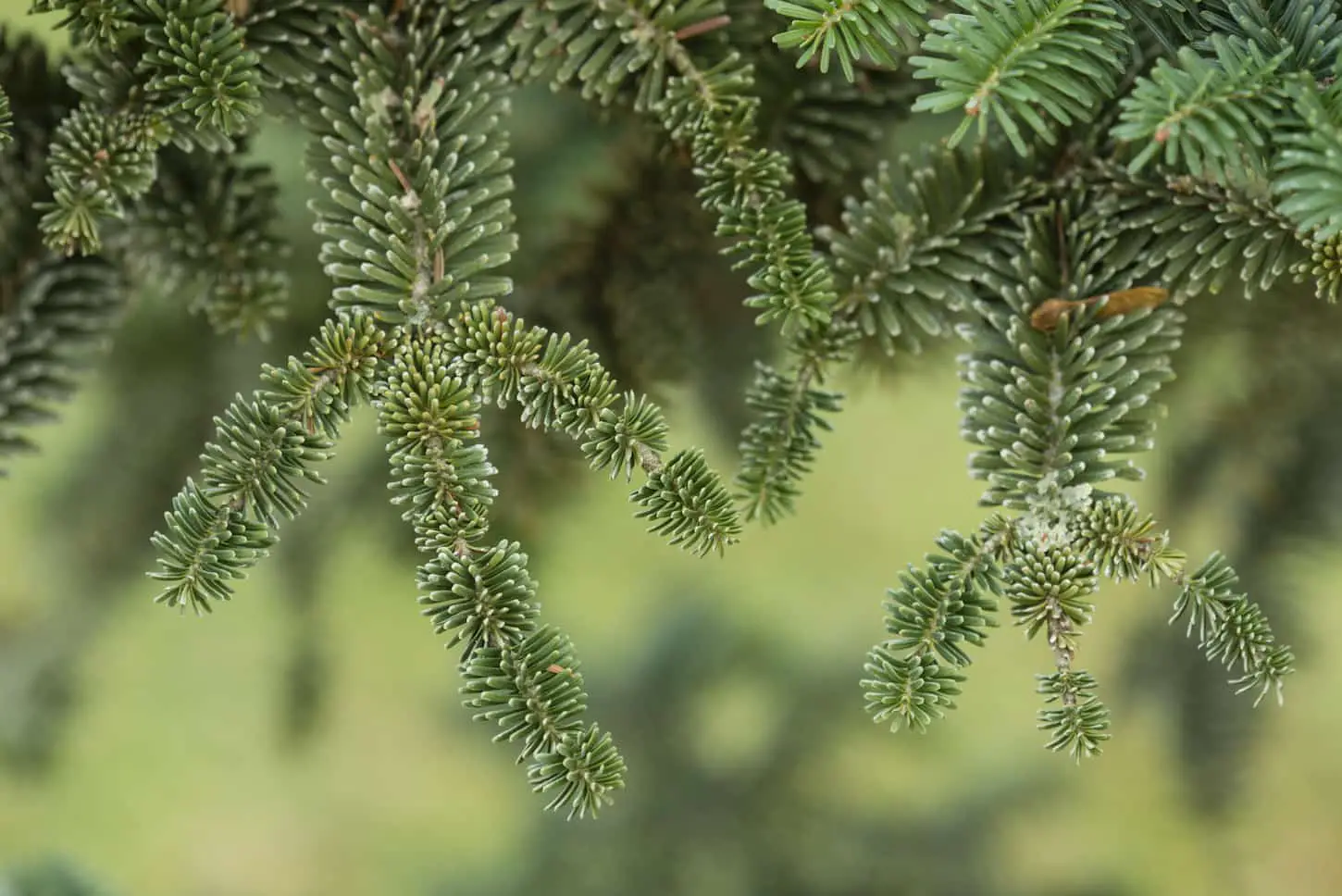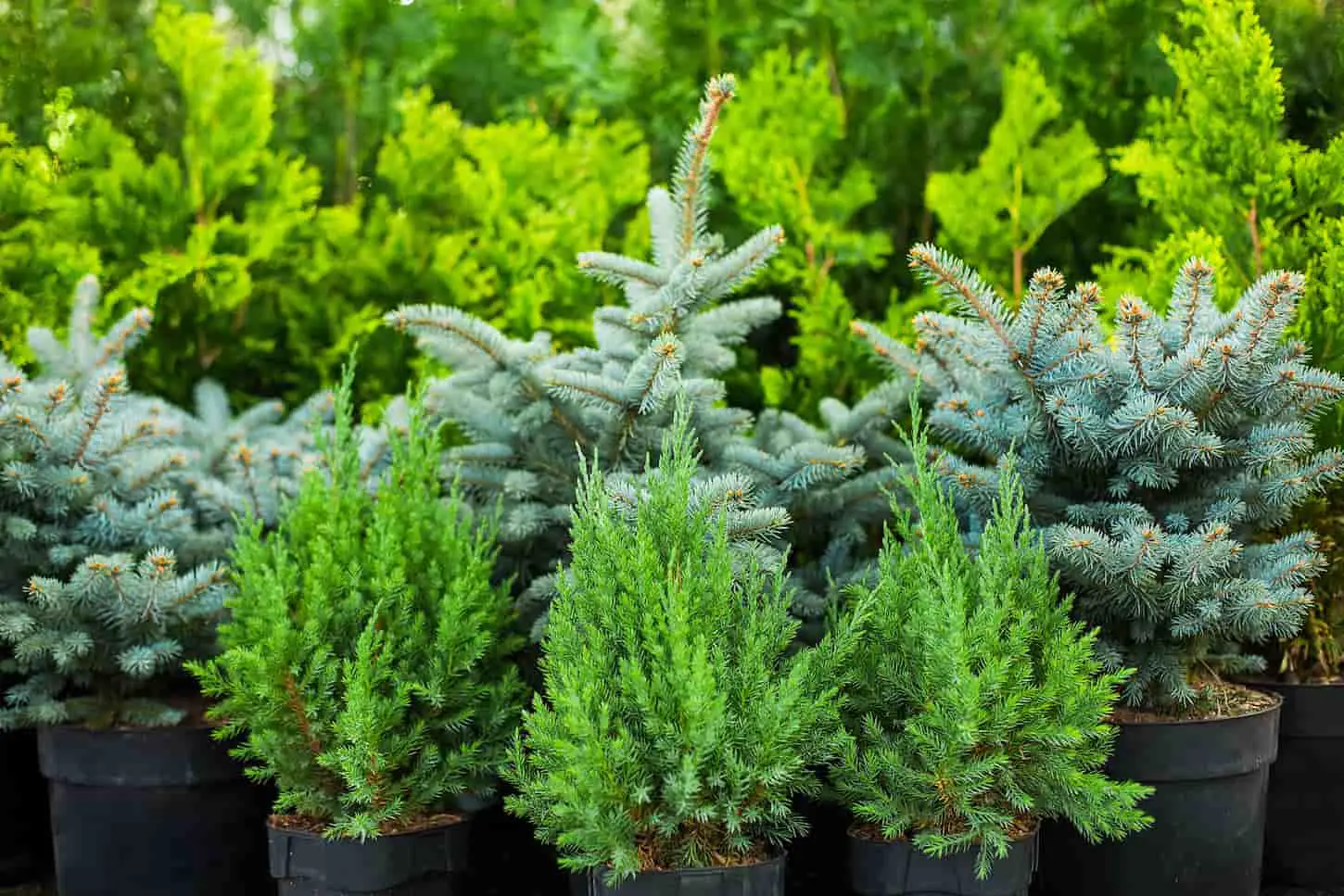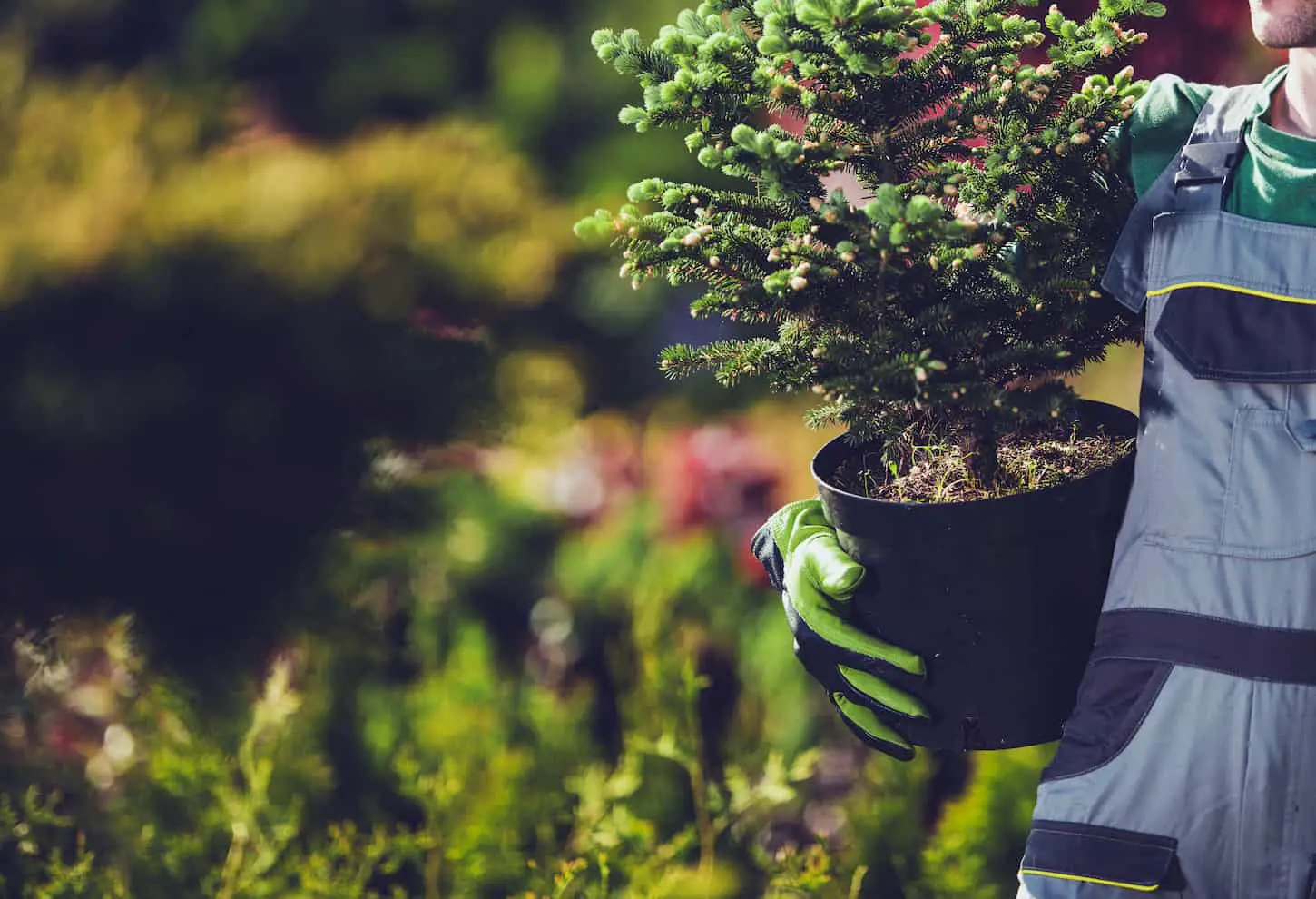Spruce trees aren’t just useful for creating paper; they are also decorative and are great to have in the yard. Spruce trees are also used to growing in harsh conditions, so they aren’t hard to grow and maintain. However, a healthy and lush spruce tree will always look better than an unhealthy one.
Most people prefer the overall look and coverage the Blue Spruce provides, making it the more popular choice for a yard than a Norway Spruce. Aside from the typical variety of Blue spruces, other spruces come in different forms, colors, and sizes. Spruces are a nifty type of tree to plant in any yard.
However, the Norway Spruce isn’t too bad to look at, and it has its fair share of benefits and quirks if we decide to go for this spruce. Of course, it depends on which spruce tree the buyer wants. Here are some pros and cons of these two spruce trees.

What is the Best Spruce Tree to Plant: Blue Spruce vs. Norway Spruce?
The best tree to plant depends on the need, the tree’s point, the local climate, water availability, the soil, and other factors. A Blue Spruce usually has thicker needles but grows slower than a Norway spruce. A Norway spruce has thinner needles but grows faster than a Colorado (Blue) spruce.
Two of the most popular Spruce Trees found in backyards are the Blue Spruce and Norway Spruce. While both trees belong to the same family, they look different and impact the yard differently. So, which is the better Spruce tree to plant? It depends on what you need. Let’s dig into some of the most commonly-asked scenarios between the two trees.
Which is better for privacy?
The better spruce (Blue vs. Norway) for privacy is the Blue spruce. A line of Blue Spruce trees should do the trick to ensure neighbors are not snooping past the fence. What is great about this idea is that it will look great too.
Some homeowners plant a line of these trees to make a privacy screen. The Blue Spruce has thicker needles that grow closer together than most other spruce trees. So it’ll provide a better privacy screen, though it’ll take longer to grow.
Which is better for shade?
The Blue Spruce has thick needles and is part of the family of dense spruce trees. This makes the tree an excellent source of shade on hot summer days, as sunlight hardly passes through the greenery.
Meanwhile, the Norway Spruce is less dense than the Blue Spruce, so getting full shade from this tree is harder or sometimes nearly impossible. The branches tend to be far apart, which allows sunlight to go through. However, due to this feature, the tree is often decorated as a Christmas tree.
Which has a faster growth rate?
The Norway Spruce is said to have the fastest growth rate. It can grow up to three feet a year in the wilderness. In a backyard, the tree grows ten to fifteen inches a year. Some Norway Spruce trees grew a record twenty inches a year despite being in a backyard, but this occurrence is rare.
The Blue Spruce will usually only grow ten to twelve inches yearly but can grow up to twenty inches yearly in a natural environment. However, if we buy an ornamental variety, there’s a chance that it’ll grow even slower.
Which requires more/less water?
Both Blue Spruce and Norway Spruce do not require a lot of water. Remember to water them at least once a week during the drought season since there might need to be more underground moisture for them to live off during those harsh seasons.
These spruce trees are low maintenance, so they became a popular plant to put in parks and yards. However, even though they don’t require much care, we should still water them when the season is dry.
Lush, healthy spruce trees will always look better than those trees unable to get many nutrients from the ground.
If you live in a drought-prone area, consider planting native trees and plants. We recommend sticking to native plants when and where possible, no matter the area.

Is There a Difference Between Blue Spruce and Norway Spruce?
Blue Spruce can be tall and wide unless it is a dwarf variety. The tree grows to ninety feet if healthy, while most Norway Spruce only grows to sixty feet. A Norway Spruce will always have a lush green color, but some types can have yellow needles.
The Blue Spruce’s needles have a bluish hue, but some varieties come in different colors. While the Blue Spruce and Norway Spruce belong to the same family of spruce trees, they have a lot of differences.
From how tall they grow to the form and color of their needles, it’s pretty easy to tell the trees apart.
The branches of the Blue Spruce grow closer together but spread away from the trunk pretty far. Meanwhile, a Norway Spruce is less dense, its branches are usually far apart, and the needles don’t grow as close together as other Spruce trees.
What Are The Similarities Between Blue Spruce and Norway Spruce?
Both plants are hardy and low maintenance, so the need for watering both types of trees is minimal. They are both fantastic ornamental trees to have in the yard. They also live for a long time, so if we plant a young one, there is a big chance our children and grandchildren will get to see them.
As a species of Spruce trees, their leaves are called needles. Unlike other trees, which have their needles attached in clusters to the branches, spruce needles are attached individually to the branches and are pointed, square, and easy to roll between a person’s fingers.
A spruce tree branch is also rough to the touch, unlike other trees with needles for leaves.
Are Blue Spruce Fast-Growing Trees?
While the Blue Spruce tree is low-maintenance, it is not fast-growing. Instead, the tree has a slow to medium growth rate depending on where we plant it and how many nutrients it can feed off. Usually, these trees grow 10 inches a year (sometimes 12 inches in a lucky year).
If we plan on growing Blue Spruce Trees, we may not be able to reap the benefits of the tree right away. But the tree is still attractive even when growing, and it’s a tree that our children and grandchildren can enjoy.
Is Norway Spruce A Fast-Growing Tree?
The Norway Spruce is one of the fastest-growing spruce trees. It can grow up to three feet a year, meaning we can enjoy the full beauty of these spruce trees after a few years. The Norway Spruce tree’s growth rate is medium to fast, depending on the environment.
If we want the Norway Spruce to grow a bit faster, there’s always the option of giving the tree extra nutrients through fertilizers. Don’t over-fertilize, though, as that can lead to health problems for the tree.

Is There a Better Type of Spruce Than Blue or Norway?
There is no such thing as the best type of spruce tree. A personal definition of “best” depends on what we intend to use the Spruce tree for and which looks better to the buyer’s eye. If the Blue Spruce or Norway Spruce do not look as nice, consider these other spruce trees listed below.
Bird’s Nest Spruce
Consider getting a Bird’s Nest Spruce tree when looking for something smaller to grow in a small backyard. It looks similar to a Round Dwarf Shrub and resembles the shape of a Bird’s Nest. The tree only grows two to four feet and can hit eight feet after thirty years.
Black Spruce
The Black Spruce isn’t usually used as an ornamental tree, but it’s still in some backyards. People even created a smaller variety that only grows one to two feet in height. The tree is lush green and looks like an average spruce tree.
Brewer Spruce
The Brewer Spruce is an interesting tree due to its branches hanging down. Have you ever seen a Weeping Willow? Well, think of this tree as the weeping spruce since it looks similar to a Weeping Willow. The tree gives off a unique vibe and would be great at giving a garden that mythical touch.
However, the Brewer Spruce is a bit more challenging to grow in some conditions as it’s used to having winter and summer. Therefore, if we live in an area without those seasons, the Brewer Spruce will most likely not grow.
Oriental Spruce
Oriental Spruce is a slower-growing tree with shorter and stubbier-looking needles. They even have a variety where the needles are yellow instead of the usual light-green color. While they aren’t picky with their soil, they sometimes fall over due to harsh winds.
Dwarf Alberta Spruce
For those with small gardens which would like a potted spruce tree, the Dwarf Alberta Spruce would be perfect. It’s even a possible Christmas tree choice that we can bring into the living room in a pot.
Some people even trim and shape them to look more attractive. If untrimmed, it usually forms the shape of a wide cone.
Engelmann’s Spruce
This Spruce tree isn’t a standard landscape specimen, especially if we live in warmer climates. Nonetheless, it’s a great tree known for its lumber. Its wood is usually used to make musical instruments. It can also live up to a hundred years, depending on how good the environment is.
Red Spruce
This interesting spruce tree got its name from the unmistakable color of its red bark, but if we cut the tree, it will show a yellow center. It’s not a great landscape tree, but it’s often farmed as a Christmas tree.
So, if we want a row of Christmas trees in the backyard, this might be something to consider. But usually, it’s not a common tree to care for since it prefers colder regions over warmer ones.
Serbian Spruce
Besides the Blue Spruce and the Norway Spruce, another common tree found in parks or backyards is the Serbian Spruce. It’s another low-maintenance spruce that can even tolerate drought and shade. Another great thing about this spruce is that it can handle air pollution.
The Serbian spruce is sturdy as it can grow in hot and humid places without many problems.
Sitka Spruce
It may not be the best spruce tree to put in a backyard, but the Sitka Spruce is a beautiful tree to consider if we’re into landscaping for parks or other areas. The tree is capable of reaching heights of 300 feet. But don’t worry; there are shorter varieties for landscapers.
White Spruce
If we want a Blue Spruce but cannot find any for sale, the next best option might be the White Spruce. Like the Blue Spruce with bluish needles, the White Spruce has a whitish-waxy coating, almost blue from afar.
It is an extremely hardy tree that can also be used as a Christmas tree. Before buying this tree, consider the area’s pollution. The White Spruce can’t handle or grow very well in highly polluted areas.

What Are Spruce Trees Typically Used For?
Spruce trees, particularly the Blue Spruce and the Norway Spruce, are used for ornamental purposes. They are typically low-maintenance trees that are good for shade and creating privacy. They are popular trees to turn into Christmas trees and can be decorated outdoors or cut down for indoor use.
However, Spruce trees are far more useful than most ornamental plants. They are hardy trees that are also commonly used for wood. They are also used to make paper, instruments, and even furniture.
Many people also find Blue Spruce’s scent incredibly calming, and they make essential oil for massages and aromatherapy. The oil is also used to create other things, such as lotions and soaps.
Pro tip and HQ opinion: if you plant spruces to get a Christmas tree, consider NOT cutting it down to bring it inside. Instead, let it live outdoors and decorate it so the whole neighborhood can enjoy your beautiful spruce. Get a potted spruce or an artificial tree for indoor use. We need all the trees we can get!
Why Do People Prefer the Blue Spruce Over the Norway Spruce?
Despite the Norway Spruce being easier and faster to grow, most people still prefer the Blue Spruce in their backyard. They like this particular spruce tree because most of its varieties tend to look more visually appealing than the Norway Spruce varieties.
However, the Norway spruce is still attractive as it can still come in different colors of needles. Both also work as great privacy trees, but the Blue Spruce has better coverage overall than the Norway Spruce.
The Blue Spruce is also attractive even when young, making it extremely appealing in almost any garden. Some people even create a bonsai version of the Blue Spruce.
TLDR: Get What Works (and Next Steps)
Get the tree that fits your needs, will work in your yard, and your local climate can support sustainably. There are a lot of Blue spruce trees in my neighborhood, but with the drought our state is in, it’s not at the top of our list of trees to plant in our yard. There are several reasons beyond water consumption. But we are looking at native trees, plants, and climate-appropriate things we can plant in our yard.
And getting potted spruce isn’t something I’d have considered until writing this article – so now it’s on my list of potential potted plants for our front porch.
No matter what you choose, please pick something responsible and sustainable. That way, we can all enjoy our backyard homesteads responsibly together. Oh, and then read one of these tree articles we wrote next. They’ll help you decide which trees to plant in your backyard homestead, giving you all the research we’ve spent weeks gathering in a fraction of the time.
- How To Make Blue Spruce More Blue: Here’s How
- What Is the Best Fertilizer for Blue Spruce Trees?
- Which Trees Should You Be Growing in Your Backyard?
Resources
Learning from your own experience is essential, but learning from others is also intelligent. These are the sources used in this article and our research to be more informed as homesteaders.
- Blue Spruce (Colorado Spruce) vs Norway Spruce – TreeTime.ca. (n.d.). Tree Time Services Inc. Retrieved October 26, 2022, from https://treetime.ca/compare.php?pcids=96-98
- Pine, Fir or Spruce Tree? (n.d.). News. Retrieved October 26, 2022, from https://www.extension.iastate.edu/news/2005/nov/061401.htm
- 10 Types of Spruce Trees Everyone Should Know. (n.d.). American Conifer Society. Retrieved October 26, 2022, from https://conifersociety.org/conifers/articles/10-types-of-spruce-trees-everyone-should-know/
- Viznyy, I. (2022, February 16). What Is The Difference Between A Blue Spruce And A Norway Spruce? World of Garden Plants. https://worldofgardenplants.com/blue-spruce-vs-norway-spruce/
- What Is The Difference Between A Blue Spruce And A Norway Spruce? (2022, February 16). World of Garden Plants. https://worldofgardenplants.com/blue-spruce-vs-norway-spruce/